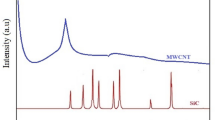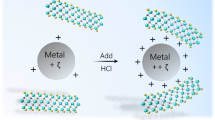Cu matrix composites have received increased attention in a wide industrial area because of their excellent mechanical properties and good electrical and thermal conductivity. However, the addition of general ceramic reinforcements often leads to a marked reduction in electrical conductivity for Cu matrix composites. In this study, the ZrB2-reinforced Cu composites have been developed to overcome this drawback since these metal borides possess relatively high electrical conductivity. The 5 wt.% ZrB2/Cu composites were prepared using hot-pressed sintering techniques at varying temperatures from 760 to 920°C. The influence of sintering temperature on the microstructure, relative density, and mechanical and electrical properties was examined. The results of the SEM observation show that ZrB2 particles are seamlessly integrated into the Cu matrix for all ZrB2/Cu composites. The average grain size of the Cu matrix increases from 360 to 980 nm with the increase of the sintering temperature. The increase in sintering temperature also leads to the surface porosity decrease from 1.4 to 0.4%. The relative density and electric conductivity of the composites increase at the same time as the sintering temperature increases. However, microhardness increases and decreases, with a maximum value of 92 HV0.2 achieved at 840°C. The elastic modulus and nanohardness maps determined from the nanoindentation indicate that the reinforced ZrB2 particles demonstrate the highest values for elastic modulus (340–500 GPa) and nanohardness (30–48 GPa). At the same time, the Cu matrix possesses a modulus of 100–200 GPa and nanohardness of about 10 GPa. TEM observation confirmed that the sintering temperature exhibits little influence on the interface reaction between ZrB2 and Cu. Both sharp interface and interface with amorphous transition layer are observed. The variation of microhardness is mainly due to the strengthening of grain refinement and to the mismatch of the thermal expansion coefficients. The above results can provide further insights into the deeper understanding of the role of sintering temperature during hot-pressed sintering.











Similar content being viewed by others
References
Xu Qiang, Zhang Xinghong, Han Jiecai, He Xiaodong, and V.L. Kvanin, “Combustion synthesis and densification of titanium diboride-copper matrix composite,” Mater. Lett., 57, 4439–4444 (2003).
D.V. Dudina, V.I. Mali, A.G. Anisimov, and O.I. Lomovsky, “Shock compression of Ti–B/Cu powder mixtures: microstructural aspects,” Mater. Sci. Eng. A, 503, 41–45 (2009).
J. Dutta Majumdar, B. Ramesh Chandra, D. Biswas, B.L. Mordike, and I. Manna, “In situ dispersion of titanium boride on copper by laser composite surfacing for improved wear resistance,” Lasers Eng., 16, 333–348 (2006).
C. Biselli, D.G. Morris, and N. Randall, “Mechanical alloying of high-strength copper alloys containing TiB2 and Al2O3 dispersoid particles,” Scr. Metall. Mater., 30, No. 10, 1327–1332 (1994).
Z.Y. Ma and S.C. Tjong, “High temperature creep behaviour of in-situ TiB2 particulate reinforced copperbased composite,” Mater. Sci. Eng. A, 284, 70–76 (2000).
Yihui Jiang, Chen Wang, Shuhua Liang, JIanqiang Ren, Xiang Du, and Feng Liu, “TiB2(-TiB)/Cu in-situ composites prepared by hot-press with the sintering temperature just beneath the melting point of copper,” Mater. Character., 121, 76–81 (2016).
S.J. Dong, Y. Zhou, Y.W. Shi, and B.H. Chang, “Formation of a TiB2-reinforced copper-based composite by mechanical alloying and Hot Pressing,” Metall. Mater. Trans. A, 33, 1275–1280 (2002).
J.P. Tu, N.Y. Wang, Y.Z. Yang, W.X. Qi, F. Liu, X.B. Zhang, H.M. Lu, and M.S. Liu, “Preparation and properties of TiB2 nanoparticle reinforced copper matrix composites by in situ processing,” Mater. Lett., 52, 448–452 (2002).
Marta Ziemnicka-Sylwester, “Superhard TiB2-based composites with different matrix fabricated from elemental powders by SHS-p-HIP,” Adv. Sci. Technol., 77, 146–152 (2013).
T.K. Jung, S.C. Lim, H.C. Kwon, and M.S. Kim, “Fabrication and properties of TiB2 reinforced Cu composites by electromagnetic stirring,” Mater. Sci. Forum, 449–452, 297–300 (2004).
P. Yih and D.D.L. Chung, “Titanium diboride copper-matrix composites,” J. Mater. Sci., 32, 1703–1709 (1997).
J. Lu, S. Shu, F. Qiu, Y. Wang, and Q. Jiang, “Compression properties and abrasive wear behaviour of high-volume fraction TiCx–TiB2/Cu composites fabricated by combustion synthesis and hot press consolidation,” Mater. Des. 40,157–162 (2012).
Xue Liu and Sen Yang, “In situ TiB2 particles reinforced copper matrix composite coating on mould steel by laser cladding,” Mater. Sci. Forum, 654–656, 1856–1859 (2010).
Jongsang Lee, J.Y. Jung, Eon-Sik Lee, W.J. Park, S. Ahn, and Nack J. Kim,“Microstructure and properties of titanium boride dispersed Cu alloys fabricated by spray forming,” Mater. Sci. Eng. A, 277, 274–283 (2000).
Seiji Motojima and Hiroaki Kosaki, “Resistivities against sea-water corrosion and sea-sands abrasion of TiB2-coated copper plate,” J. Mater. Sci. Lett., 4, 1350–1352 (1984).
Lin Yinghua, Yao Jianhua, Lei Yongping, Fu Hanguang, and Wang Liang, “Microstructure and properties of TiB2–TiB reinforced titanium matrix composite coating by laser cladding,” Opt. Laser. Eng., 86, 216–227 (2016).
J. Ruzic, J. Stasic, V. Rajkovic, and D. Bozic, “Synthesis, microstructure and mechanical properties of ZrB2 nano and microparticle reinforced copper matrix composite by in situ processing,” Mater. Des., 62, 409–415 (2014).
J.-H. Lee, J.-Y. Ju, C.-H. Kim, J.-H. Park, H.-S. Lee, and Y.-D. Shin, “The development of an electroconductive SiC–ZrB2 composite through spark plasma sintering under argon atmosphere,” J. Electr. Eng. Technol. 5, No. 2, 42–51 (2010).
A. Passerone, M. Luigia Muolo, R. Novakovic, and Daniele Passerone, “Liquid metal/ceramic interactions in the (Cu, Ag, Au)/ZrB2 systems,” J. Europ. Ceram. Soc., 27, 3277–3285 (2007).
D.L. Gong, S. Zhu, and Q. Xu, “Processing of ZrB2–15wt.% Cu composites via spark plasma sintering,” Rare Metal. Mat. Eng., 42, 574–577 (2016).
Z. Zhang, Y. Sheng, X. Xu, and W. Li, “Microstructural features and mechanical properties of in situ formed ZrB2/Cu composites,” Adv. Eng. Mater., 17, 1338–1343 (2015).
J. Ružić, J. Stašić, and S. Marković, “Synthesis and characterization of Cu–ZrB2 alloy produced by PM techniques,” Sci. Sinter., 46, No. 2, 217–224 (2014).
S.Z. Zhu, D.L. Gong, Z. Fang, and Q. Xu, “Preparation and properties of ZrB2–Cu composites by spark plasma sintering,” Key Eng. Mater., 512–515, 739–743 (2012).
Tungwai L. Ngai, Wei Zheng, and Yuanyuan Li, “Effect of sintering temperature on the preparation of Cu–Ti3SiC2 metal matrix composite,” Progress in Natural Science: Materials International, 23, No. 1, 70–76 (2013).
C. Wang, H. Lin, Z. Zhang, and W. Li, “Fabrication, interfacial characteristics and strengthening mechanisms of ZrB2 microparticles reinforced Cu composites prepared by hot-pressed sintering,” J. Alloys Compd., 748, 546–552 (2018).
W. Shang, H.L. Wang, and S.J. Zhao, “Preparation and properties of ZrB2–Cu composites sintered by hotpressing sintering,” Key Eng. Mater., 602–603,447–450 (2012).
B. Vignesh, W.C. Oliver, G. Siva Kumar, and P. Sudharshan Phani, “Critical assessment of high speed nanoindentation mapping technique and data deconvolution on thermal barrier coatings,” Mater. Des., 181, 108084 (2019).
A. Opálek, N. Beronská, Š. Nagy, T. Dvorák, P. Štefánik, T. Švantner, P. Švec, and K. Iždinský, “Microstructure and thermal stability of the Cu–ZrB2 and CuCr1Zr–ZrB2 composites prepared by gas pressure infiltration,” Kovove Mater., 57, 1–9 (2019).
Tongmin Wang, Cunlei Zou, Zongning Chen, Mingyu Li, Wei Wang, Rengeng Li, and Huijun Kang, “In situ synthesis of TiB2 particulate reinforced copper matrix composite with a rotating magnetic field,” Mater. Des., 65, 280–288 (2015).
Mingliang Wang, Dong Chen, Zhe Chen, Yi Wu, Feifei Wang, Naiheng Ma, and Haowei Wang, “Mechanical properties of in-situ TiB2/A356 composites,” Mater. Sci. Eng. A, 590, 246–251 (2014); DOI:https://doi.org/10.1016/j.msea.2013.10.021.
C.-S. Kim, I. Sohn, M. Nezafati, J. B. Ferguson, B. F. Schultz, Z. Bajestani-Gohari, P.K. Rohatgi, and K. Cho, J., “Prediction models for the yield strength of particle-reinforced unimodal pure magnesium (Mg) metal matrix nanocomposites (MMNCs),” Mater. Sci., 48, 4191–4204 (2013).
D. Wu, Junyan Zhang, J.C. Huang, H. Beid, and T.G. Nieha, “Grain-boundary strengthening in nanocrystalline chromium and the Hall–Petch coefficient of body-centered cubic metals,” Scripta Mater., 68, 118–121 (2013).
P.C. Carnavas and Neil W Page, “Elastic properties of compacted metal powders,” J. Mater. Sci., 33, 4647–4655 (1998); https://doi.org/10.1023/A:1004445527430.
F.C. Nix and D. MacNair, “The thermal expansion of pure metals: copper, gold, aluminum, nickel, and iron,” Phys. Rev. 60, 597–605 (1941); https://doi.org/10.1103/PhysRev.60.597.
William A. Paxton, Tevfik E. Özdemir, İlyas Şavklıyıldız, Terence Whalen, Hülya Biçer, Enver Koray Akdoğan, Zhong Zhong, and Thomas Tsakalakos, “Anisotropic thermal expansion of zirconium diboride: An energy-dispersive X-Ray diffraction study,” J. Ceram., Article ID 8346563 (2016); https://doi.org/10.1155/2016/8346563.
Tongmin Wang, Zongning Chen, Yuanping Zheng, Yufei Zhao, Huijun Kang, and Lei Gao, “Development of TiB2 reinforced aluminum foundry alloy based in situ composites – Part II: Enhancing the practical aluminum foundry alloys using the improved Al–5 wt.% TiB2 master composite upon dilution,” Mater. Sci. Eng. A, 605, 22–32 (2014).
M. López, J.A. Jiménez, and D. Corredor, “Precipitation strengthened high strength-conductivity copper alloys containing ZrC ceramics,” Compos.: Part A., 38, Issue 2, 272–279 (2007). https://doi.org/10.1016/j.compositesa.2006.05.002.
Acknowledgments
The authors would like to acknowledge the financial support by the National Natural Science Foundation of China (92166112, 52004101), the Natural Science Foundation of Guangdong Province (No. 2022A1515012276), the Educational Commission of Guangdong Province (No. 2022ZDZX3002), the Projects of MOE Key Lab of Disaster Forecast and Control in Engineering in Jinan University (20200904006), Guangdong Basic and Applied Basic Research Foundation (2020B1515420004), Guangxi Key Laboratory of Information Materials (211003-K), and Supported by the Open Project Program of Wuhan National Laboratory for Optoelectronics (Grant No. 2021WNLOKF010).
Author information
Authors and Affiliations
Corresponding author
Additional information
Published in Poroshkova Metallurgiya, Vol. 61, Nos. 9–10 (547), pp. 91–106, 2022.
Rights and permissions
Springer Nature or its licensor (e.g. a society or other partner) holds exclusive rights to this article under a publishing agreement with the author(s) or other rightsholder(s); author self-archiving of the accepted manuscript version of this article is solely governed by the terms of such publishing agreement and applicable law.
About this article
Cite this article
Peng, Z., Chenchen, W., Shengfeng, Z. et al. Effect of Sintering Temperature on the Microstructure and Properties of High-Strength and Highly Conductive 5 wt.% ZrB2/Cu Composite. Powder Metall Met Ceram 61, 560–573 (2023). https://doi.org/10.1007/s11106-023-00345-w
Received:
Published:
Issue Date:
DOI: https://doi.org/10.1007/s11106-023-00345-w




